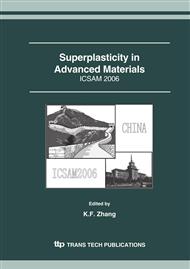p.193
p.199
p.203
p.211
p.219
p.225
p.231
p.237
p.241
Superplastic Deformation of Magnesium Alloy AZ31 under Biaxial Loading Condition
Abstract:
Accurate constitutive modeling of superplastic deformation is critical for successful simulation and optimization of superplastic forming. The selection of the forming pressure profiles in gas blow forming of superplastic materials is still based on trial and error due to the limited predictive capabilities of current models describing superplastic deformation. In general, these models are based on uniaxial loading condition, assuming isotropic behavior. In this work, we examine the biaxial bulge forming of AZ31 magnesium alloy using pressure profiles derived from different available analytical models. The results clearly show the need for more accurate description of superplastic deformation to improve predictive capabilities. In addition, a pressure profile that is generated using FE in conjunction with a microstructure-based constitutive model is used and the results indicate better ability to predict the height of the bulged sheet.
Info:
Periodical:
Pages:
219-224
Citation:
Online since:
July 2007
Authors:
Keywords:
Price:
Сopyright:
© 2007 Trans Tech Publications Ltd. All Rights Reserved
Share:
Citation:


